9 Reasons Why Some Think the T-34 was a Poor Tank
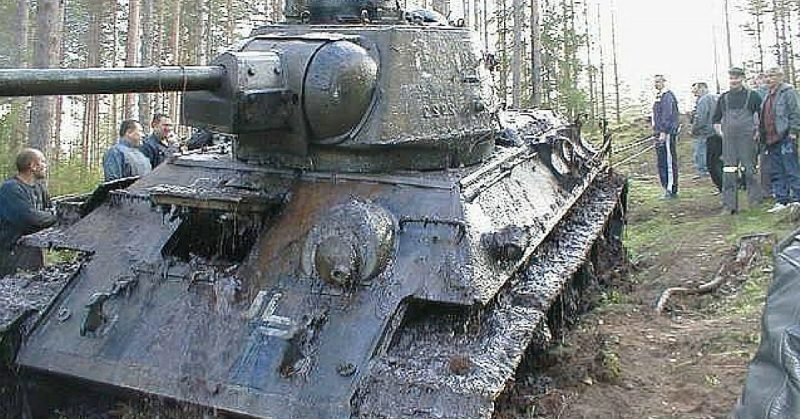
The T-34 is regarded as one of, if not the best vehicle of the Second World War, and one of the most influential tank designs of all time.
But look a little closer, and the cracks begin to appear in it’s status, and the chinks, or quite literally gaps, in its armour can be seen. With 44,900 T-34s lost during World War Two, was the T-34 really the best tank of the war?
9. Christie Suspension
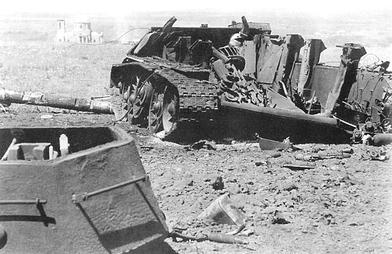
Christie suspension is a setup where each wheel has its own spring and damper. With far greater range of travel than leaf spring suspension, a Christie vehicle can drive much faster on rough terrain.
An inherent drawback of Christie suspension is that it has to be mounted internally, taking up interior space. If a component is damaged and needs replacing, the tracks, the unit’s wheel, and the outer layer of armour need to be removed to access the suspension.
For the T-34, all these issues were present, but it also lacked a shock absorber to control suspension travel. This meant the springs were free to compress and expand unrestricted, making off road stability a nightmare. When coming to a halt to fire the main, the tank would pitch back and forth violently before stabilising enough to lay the gun on target.
Soviet designers were aware of this flaw, and wanted to switch to torsion bar suspension, but as the factory retooling process would have delayed production, the setup stayed all the way up until the last built T-34.
8. Tactics and Crews
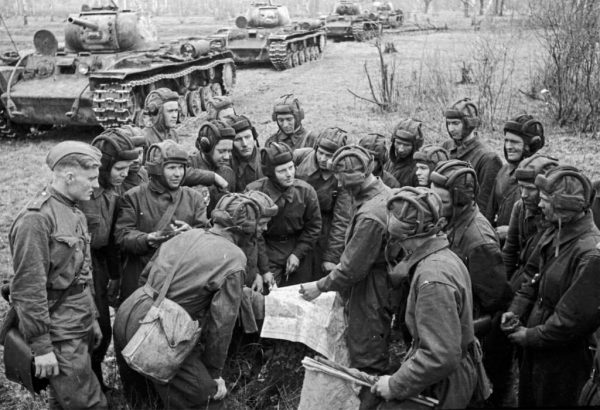
T-34’s suffered from aggressive Soviet doctrine, and inexperienced crews. Huge losses of tanks and men (23,500 tracked vehicles losses in 1943) meant new crews were in high demand, and were often sent to the front lines after only completing basic training.
Added to this, Soviet tactics were usually outdated or completely ineffective, and due to a lack of situational awareness of the crews, any battle plans would quickly fall apart into chaos with each tank out for itself.
7. Lack of a Radio
Until the T-34-85 entered production in 1944, the only T-34s that were armed with a radio set were company commanders. Radios were in short supply, so the rest of the company’s tanks were issued signal flags for the commander to communicate with in battle.
Unsurprisingly, flags are quickly rendered useless by smoke and dust in battle. So combined with poor tactics, T-34 crews struggled to maintain any type of coherency or fluidity in combat, leading to Soviet commanders using the costly method of using their sheer number advantage to overwhelm the enemy.
6. Transmission Problems
The gearbox in pre 1942 built T-34s was another design flaw of the tank. The gears were spur cut, and lacked synchronizers, so a huge amount of force was required from the driver to change gear. It is widely reported that drivers would use a hammer to change gear.
The gearbox only had 4 forward gears so could not make full use of the 500 bhp engine, made worse by the fact that 4th gear could only be used on paved roads. Off road, only 1st and 2nd gears could be entered, as changing from 2nd to 3rd required superhuman strength. Overall, gearboxes used poor quality materials, and combined with the beating they required to operate, would often fail.
Eventually this transmission would be changed to a 5 speed one in late 1942, but new T-34s delivered were not guaranteed to have it.
5. Armour
The armour on the T-34, while not revolutionary, gave the Germans great trouble in the early years of the war. Sloped armour does come at a cost however; it eats up interior space. The angled armour and Christie suspension meant the interior was so cramped that a US study during the Korean War found that a penetration by an anti tank round usually led to the destruction of the tank and the loss of 75% of the crew. In the Sherman the figure was only 18%.
US studies of T-34s noticed huge variations of armour strength, manufacture methods and composition. These variations at worst had fatal effects on the crews, where armour that was too brittle would stop a round penetrating, but small pieces of metal would flake off inside the tank, becoming shrapnel. This is known as spalling.
Lastly, the welds and joins between the armour plates were of very poor quality. This allowed rain in, causing electrical failures, and left the tank vulnerable to weapons like petrol bombs. Welds would frequently crack after a round impact too.
4. Two Man Turret
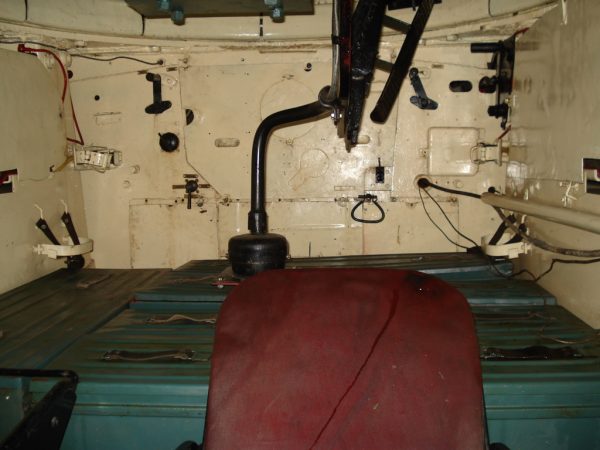
T-34s had a cramped, two man turret that housed the loader and commander/gunner. The commander had the tough job of trying to maintain situational awareness, directing the driver, finding targets and firing the gun. This setup meant he was severely over worked and didn’t complete any of his tasks to a high standard.
The loader had nine rounds in ‘ready racks’ on the hull compartment sides, but once these were used up, he had to grab the 21 lb rounds from bins under a rubber mat on the hull floor. To make this task even harder, the T-34 had no turret basket, so the loader had to shuffle round the hull as the turret rotated around him.
This made the T-34 a poor offensive vehicle, as the commander had to direct the driver, while finding and shooting at the enemy as the loader stumbled around open bins and empty ammunition casings on the hull floor.
These two men could not keep up with the efficiency of German tanks accurately sending rounds down range. While acknowledged by Soviet high command, this issue would not be addressed until the T-34-85 in 1944.
3. Crew Conditions
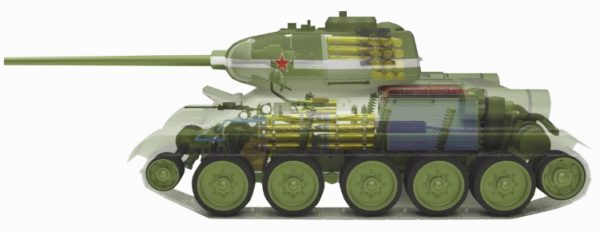
Due to high demands on production output, crew comforts in the T-34 were omitted by factories to speed up assembly time. Soft padding on sharp parts inside the vehicle was almost completely missing, making the tank’s instability caused by the Christie suspension a bigger issue as crews would be thrown around inside the tank.
It has been said that speeding up production became so desperate that factories would send tanks out without a drivers seat, with the driver having to fold up his great coat and use that to sit on. The cramped inside also gave the crews very little room to move, and meant that a penetrating hit would most likely kill a crew member.
2. Visibility
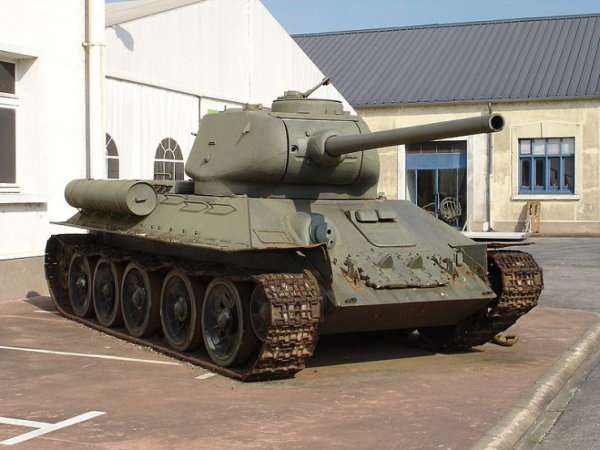
In combat one of the most severe disadvantages the T-34s suffered with was visibility. The commander lacked a dedicated cupola until late 1942.
Until then he only had one periscope facing forward with a narrow field of few. Soviet doctrine was to enter battle with all hatches closed, so the commander’s seat didn’t have a height setting to allow the commanders head to poke out, unlike German commanders who in all but the worst circumstances would keep their head out the tank to see the battlefield.
The driver also only had a forward facing vision slit when his hatch was closed, and usually couldn’t receive help from the commander as he was preoccupied with firing the gun.
Other crew members only had small vision slits to peer out of, so the tank was almost completely blind. German reports note that T-34s were extremely slow to react to incoming fire, often allowing German gunners to fire 2-3 shots before returning fire.
One anti tank crew reported firing 23 rounds at a T-34 and jammed it’s turret ring, an impressive feat of armour protection, but a serious display of how blind T-34s were to allow 23 shots to be fired from one gun. Again, this problem wasn’t fully addressed until 1944.
1. Reliability
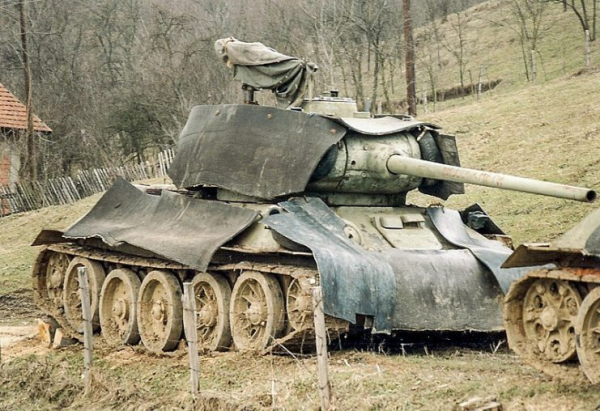
If a tank is the best in the world with armour, firepower and mobility, but breaks down before it reaches battle, is it a good tank? This logic is often applied to heavy German tanks, but also can be used on the T-34 too.
In 1941, the V-2-34 V 12 engine reportedly was good for 100 hours use on average. In 1942, supposedly T-34s could only reliably travel 22 miles before a breakdown. Officially, the head of the Armored Directorate of the Red Army N.Fedorenko stated that the average mileage of the T-34 did not exceed 125 miles before needing an overhaul.
Turret rotation motors would frequently fail, engine air filters allowed dirt and dust in, transmissions were almost guaranteed to fail and early tracks were weak and would snap.
Another Article From Us: The Sherman 75mm v Tiger 1 88mm
Vehicle losses to mechanical failures are staggering. In total, over 57,000 T-34s were produced, with 44,900 of these lost. It is reported that 40% of these losses were due to mechanical or logistic failures. Overall, between 1941 and 1945 the Soviets lost an unfathomable 96,600 armoured fighting vehicles.
